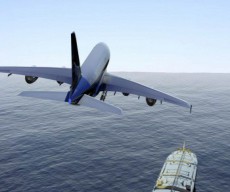
An ongoing reversal of the much discussed modal shift from air to sea will continue despite the recovery of port operations on the US West Coast following the crippling strike last year, according to the latest report from Drewry Shipping Consultants.
The damage done to supply chains ahead of the Thanksgiving and Christmas peaks last year has apparently left a lingering bad taste in the mouths of shippers in some high-value sectors.
“As port operations improve on the US West Coast the reversal in the long-term shift towards ocean will resume. The prospects of missed sailings in the peak season as ocean carriers look to redress the supply-demand imbalance could potentially prolong the blip for a small number of high-value goods,” Drewy said.

It noted that while the ‘big picture’ remains that of the far cheaper ocean freight sector growing at a much faster rate than air cargo alongside growing demand containerised commodities, more higher-value goods typically carried by air cargo have been increasingly trusted to ocean carriers. But Drewry notes that US Census Bureau data shows that trend was reversed last year – particularly in two key sectors into the US – fashion and high tech.
Typically, there is very little overlap in the goods that ocean and air carry, but as Drewy notes there is a small bubble in the middle where the two go head-to-head. These include items and parts from the hi-tech, fashion and automotive industries among a small select group that require expedited transportation.
Drewry notes that market share numbers – air cargo has a tiny 2.8 per cent share of US import containerisable trade, up from 2.4 per cent at the start of 2014 – are too small to give an accurate picture to conclusively declare a ‘reversed’ modal shift.
But again pointing to US Census Bureau data, Drewry notes that the data shows air cargo has been increasing its market share over the last year or so, in two specific areas – fashion and high-tech commodities which are registering the most significant rise.
“Fashionable clothing, here represented by women’s blouses, has been switching to air in recent months in readiness for the summer season. The need to get more mundane everyday clothing such as men’s vests and T-shirts is less pressing, but even here there has been a small move towards air cargo,” Drewry said.









